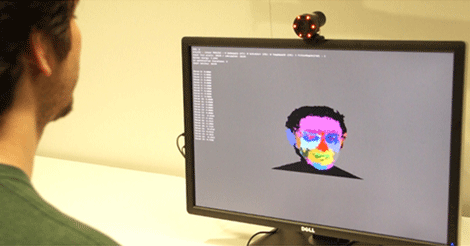
Transforming a standard digital camera so it can perceive 3D depth of field
Research from Microsoft suggests that with a few modifications an ordinary digital camera, like the one on your smartphone, can be used as a 3D depth camera.
While efforts like Google’s Project Tango are planning on adding depth cameras into our mobile gadgets of the near future, Microsoft has been looking to make access to developing 3-D applications easier by lowering costs and technical barriers to entry for such devices.
As featured in the MIT Technology Review, a group of researchers modified web cameras by removing the near infrared filter (used in cameras to block unwanted light signals in pictures) before adding a filter that only allowed infrared light to pass, surrounding the lens with a ring of several cheap near-infrared LEDs.
As MIT Technology Review, reports: “The Microsoft team says it wanted to use the reflective intensity of infrared light as something like a cross between a sonar signal and a torch in a dark room.
“The light would bounce off the nearby object and return to the sensor with a corresponding intensity. Objects are bright when they’re close and dim when they’re far away—intuitive to us when it comes to visible light. But the group needed to train the machines (in this case a Samsung Galaxy Nexus smartphone and a Microsoft LifeCam Web camera) on that relationship, so the camera could determine if it was seeing, say, a large hand in the distance, or a small hand up close.”
The overall theme of the research was to train the cameras to recognise the properties of the skin’s reflection, making it easier to control an Xbox game for example. Yet if it could be trained to recognise different materials there’s a possibility that models could be scanned and materials data would automatically be entered into the CAD data.






